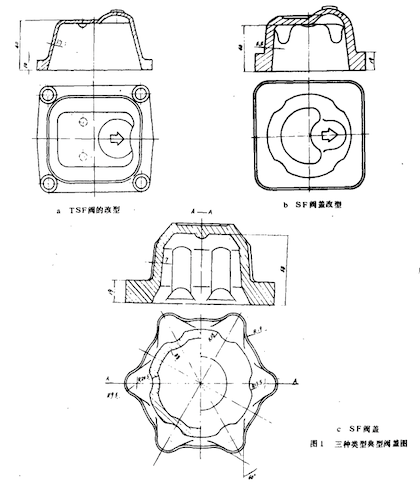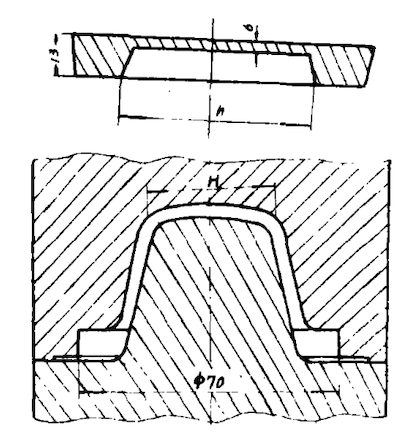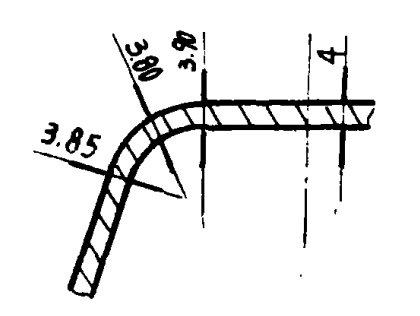Forging Medium and High-pressure Valve Bonnets
Forging Medium and High-pressure Valve Bonnets
Jan 25, 2024
Forging has been a traditional method of manufacturing various components for centuries. In the field of forging valves, forging plays a crucial role in creating durable and reliable bonnets for medium and high-pressure valves. The process involves shaping metal through heat and pressure, resulting in a product that exhibits superior strength and resistance to wear. Medium and high-pressure valves are essential components used in industries such as oil and gas, petrochemicals, and power generation. These valves must withstand extreme conditions, including high temperatures and pressures. Therefore, it is imperative to manufacture bonnets that can endure these demanding environments.
Forging provides several advantages over other manufacturing methods when it comes to valve bonnet production. Firstly, the grain structure of forged materials is refined during the process, enhancing their mechanical properties such as tensile strength and toughness. This ensures that the bonnets can handle the stresses imposed on them during operation. Secondly, forging eliminates defects commonly found in castings or welded components. The absence of porosity or cracks enhances the integrity of the valve bonnet, reducing the risk of failure under pressure. Furthermore, forging allows for precise control over material composition by selecting specific alloys suitable for high-pressure applications. This ensures optimal performance while maintaining corrosion resistance.
In conclusion, forging medium and high-pressure valve bonnets is a time-tested technique that guarantees superior quality products capable of withstanding extreme conditions. By utilizing this method, manufacturers can provide valves that meet industry standards while ensuring safety and reliability in critical operations.
With the development of industry, especially the development of petroleum and chemical industries, various valves are increasingly used. To improve the efficiency of the valve, and reduce the volume and weight of the valve, many valve bonnets adopt a structure in which the flange part is thicker and the top and cylindrical parts are thinner. To improve the load-bearing capacity of medium and high-pressure valves, forged parts are gradually used instead of cast parts. Because under high pressure, the weight of casting valves is greatly increased, and leakage often occurs, affecting the efficiency of the valve. Using forgings, only the plane combined with the valve body and the mounting bolts need to be processed, and should have light weights and have no penetration.
Figure 1 shows typical bonnets of three types. The characteristic of these forgings is that there is a great difference in thickness. Generally, the ratio of the thickness of the flange to that of the top and the cylindrical part is greater than 2.5; in addition, the cylindrical part is deep, generally greater than 40mm. This kind of valve bonnet is difficult to forge. The key issue lies in billet making. If the billet is not made properly, the billet can easily be scrapped during pre-forging or final forging. We will briefly introduce the trial production of this type of forging.

Figure 1 Three kinds of valve bonnets
1. Conditions of trial production
Equipment: 560kg air hammers
Blank: 50×50, No. 35 steel
Molds: As shown in Figure 2, No. 45 steel, quenched, HRC50 to 52 surface finish 6.
Lubricant: No. 20 engine oil plus graphite
2. Situations of trial production
(1) Make the blank into a plate with equal thickness and forge it on the mold. The result is that the top size is almost unchanged. When it is reheated and then forged; the top thickness changes very little; the flange with a greater thickness lacks metal and its severity changes with the thickness of the plate. The greater the thickness is, the more serious the lack of metal becomes.
(2) Make the blank into one that is thinner in the middle and thicker around it, as shown in picture 2. After forming, it can be seen that the dimension h of the thinned part of the pre-forged blank has a certain relationship with the dimension H of the top of the forging. When the ratio of h to H is about 1/2, if the cylinder is relatively smooth, the part near the flange will be cracked; the thicker the plate is, the greater the crack will be; if the cylinder has a corner, the apart at the corner cracks. Similarly, the thicker the plate is, the greater the crack is. When the ratio of h to H is about 1, it is similar to the above situation, except that the crack is smaller. When the ratio of h to H is about 1.1, it depends on the plate’s thickness. If the plate has an appropriate, it can be formed. If the plate’s thickness is inappropriate, the thickness of the forgings is uneven though no cracking occurs. In this case, regardless of the plate’s thickness, the forming is not ideal. When the ratio of h to H is about 1.3, as long as there is not much difference in the plate thickness, the forming is better and the yield is the highest. When the ratio of h to H is about 1.5, regardless of the plate thickness, folding occurs at the top four corners of the forging. Depending on the placement of the blank, folding sometimes occurs in one corner and sometimes in the second corner. When the ratio of h to H is too great, folding occurs even at the four corners and occasionally at three corners.

Figure 2 The blank
(3) Influence of the size of the cylindrical part
We selected two sizes to experiment with. One size is 40mm, and the experimental conditions are as described above. Another size is 25mm. Practice has proved that due to the small size of the cylinder, it can be formed by general forging, that is, the formability is good.
3. Cutting and inspection
We have dissected several formed forgings and the test results are as follows:
During the test, we cut the center part of the blank into a thickness of 4mm, and then forged it on the forming die. After cutting and examination, it is found that in the center part of the top, there is a section whose size is almost unchanged, and the greater the ratio of h to H, the constant part increases. When h to H is equal to 1.3, and the average ratio h/H is equal to 1.1, which will be increased to 2 to 3mm. The connection between the barrel and the fillet is next, and the connection between the top and the fillet is the smallest: the thinning at the fillet is 0.1 to 0.12mm greater than the other two places on average, and the smaller the ratio of h to H, the greater the thinning at the fillet. For example, when the ratio of h to H equals 1.1, the average thickness is 0.05 to 0.1mm more than when the ratio of A to H equals 1.3. In addition, the thinning of the barrel is 0.04 to 0.05mm greater on average than that of the top, and it also increases with the decrease of the ratio of h to H.
The size of the fatigue bending part at the corner of the top and the barrel is significantly thinned, as shown in Figure 3. The thinning conditions at the rounded corners, the connection between the barrel and the rounded corners, and between the top and the rounded corners are different. The rounded corners are the thinnest.

Figure 3 Thinning at rounded corners
The size of the connection between the barrel and the flange may also be thinned, and the size of the thinning is related to the ratio of h to H. The smaller the ratio of h to H is, the greater the thinning becomes. However, for some samples with the ratio of h to H being equal to 1.3, the forming is better, and no thinning was found during testing.
Forging provides several advantages over other manufacturing methods when it comes to valve bonnet production. Firstly, the grain structure of forged materials is refined during the process, enhancing their mechanical properties such as tensile strength and toughness. This ensures that the bonnets can handle the stresses imposed on them during operation. Secondly, forging eliminates defects commonly found in castings or welded components. The absence of porosity or cracks enhances the integrity of the valve bonnet, reducing the risk of failure under pressure. Furthermore, forging allows for precise control over material composition by selecting specific alloys suitable for high-pressure applications. This ensures optimal performance while maintaining corrosion resistance.
In conclusion, forging medium and high-pressure valve bonnets is a time-tested technique that guarantees superior quality products capable of withstanding extreme conditions. By utilizing this method, manufacturers can provide valves that meet industry standards while ensuring safety and reliability in critical operations.
With the development of industry, especially the development of petroleum and chemical industries, various valves are increasingly used. To improve the efficiency of the valve, and reduce the volume and weight of the valve, many valve bonnets adopt a structure in which the flange part is thicker and the top and cylindrical parts are thinner. To improve the load-bearing capacity of medium and high-pressure valves, forged parts are gradually used instead of cast parts. Because under high pressure, the weight of casting valves is greatly increased, and leakage often occurs, affecting the efficiency of the valve. Using forgings, only the plane combined with the valve body and the mounting bolts need to be processed, and should have light weights and have no penetration.
Figure 1 shows typical bonnets of three types. The characteristic of these forgings is that there is a great difference in thickness. Generally, the ratio of the thickness of the flange to that of the top and the cylindrical part is greater than 2.5; in addition, the cylindrical part is deep, generally greater than 40mm. This kind of valve bonnet is difficult to forge. The key issue lies in billet making. If the billet is not made properly, the billet can easily be scrapped during pre-forging or final forging. We will briefly introduce the trial production of this type of forging.

Figure 1 Three kinds of valve bonnets
1. Conditions of trial production
Equipment: 560kg air hammers
Blank: 50×50, No. 35 steel
Molds: As shown in Figure 2, No. 45 steel, quenched, HRC50 to 52 surface finish 6.
Lubricant: No. 20 engine oil plus graphite
2. Situations of trial production
(1) Make the blank into a plate with equal thickness and forge it on the mold. The result is that the top size is almost unchanged. When it is reheated and then forged; the top thickness changes very little; the flange with a greater thickness lacks metal and its severity changes with the thickness of the plate. The greater the thickness is, the more serious the lack of metal becomes.
(2) Make the blank into one that is thinner in the middle and thicker around it, as shown in picture 2. After forming, it can be seen that the dimension h of the thinned part of the pre-forged blank has a certain relationship with the dimension H of the top of the forging. When the ratio of h to H is about 1/2, if the cylinder is relatively smooth, the part near the flange will be cracked; the thicker the plate is, the greater the crack will be; if the cylinder has a corner, the apart at the corner cracks. Similarly, the thicker the plate is, the greater the crack is. When the ratio of h to H is about 1, it is similar to the above situation, except that the crack is smaller. When the ratio of h to H is about 1.1, it depends on the plate’s thickness. If the plate has an appropriate, it can be formed. If the plate’s thickness is inappropriate, the thickness of the forgings is uneven though no cracking occurs. In this case, regardless of the plate’s thickness, the forming is not ideal. When the ratio of h to H is about 1.3, as long as there is not much difference in the plate thickness, the forming is better and the yield is the highest. When the ratio of h to H is about 1.5, regardless of the plate thickness, folding occurs at the top four corners of the forging. Depending on the placement of the blank, folding sometimes occurs in one corner and sometimes in the second corner. When the ratio of h to H is too great, folding occurs even at the four corners and occasionally at three corners.

Figure 2 The blank
(3) Influence of the size of the cylindrical part
We selected two sizes to experiment with. One size is 40mm, and the experimental conditions are as described above. Another size is 25mm. Practice has proved that due to the small size of the cylinder, it can be formed by general forging, that is, the formability is good.
3. Cutting and inspection
We have dissected several formed forgings and the test results are as follows:
During the test, we cut the center part of the blank into a thickness of 4mm, and then forged it on the forming die. After cutting and examination, it is found that in the center part of the top, there is a section whose size is almost unchanged, and the greater the ratio of h to H, the constant part increases. When h to H is equal to 1.3, and the average ratio h/H is equal to 1.1, which will be increased to 2 to 3mm. The connection between the barrel and the fillet is next, and the connection between the top and the fillet is the smallest: the thinning at the fillet is 0.1 to 0.12mm greater than the other two places on average, and the smaller the ratio of h to H, the greater the thinning at the fillet. For example, when the ratio of h to H equals 1.1, the average thickness is 0.05 to 0.1mm more than when the ratio of A to H equals 1.3. In addition, the thinning of the barrel is 0.04 to 0.05mm greater on average than that of the top, and it also increases with the decrease of the ratio of h to H.
The size of the fatigue bending part at the corner of the top and the barrel is significantly thinned, as shown in Figure 3. The thinning conditions at the rounded corners, the connection between the barrel and the rounded corners, and between the top and the rounded corners are different. The rounded corners are the thinnest.

Figure 3 Thinning at rounded corners
The size of the connection between the barrel and the flange may also be thinned, and the size of the thinning is related to the ratio of h to H. The smaller the ratio of h to H is, the greater the thinning becomes. However, for some samples with the ratio of h to H being equal to 1.3, the forming is better, and no thinning was found during testing.
Next: Correct Installation of Forged Steel Check Valves
Previous: Forging Process and Production of F91 Gate Valve Bodies
News
About Us
Best Categories
Useful Links